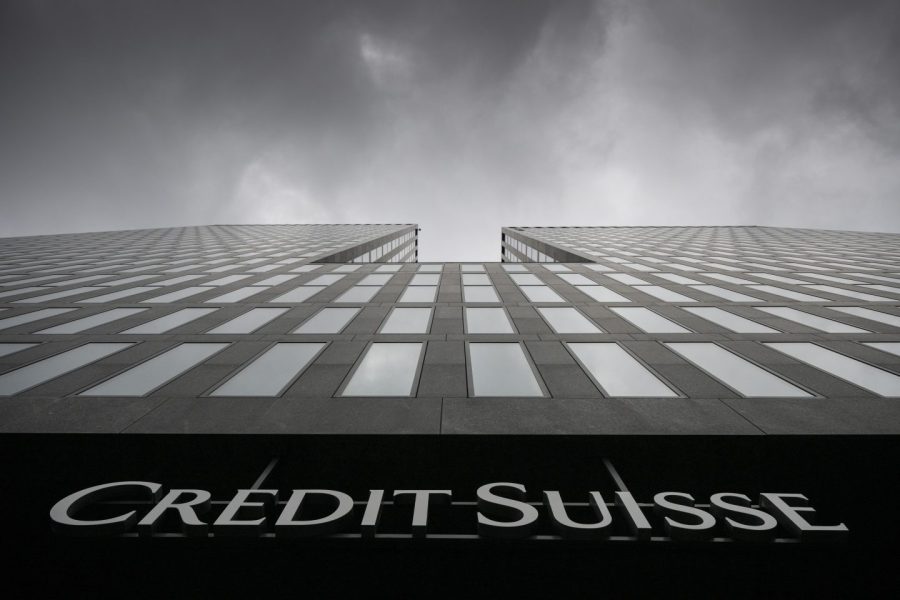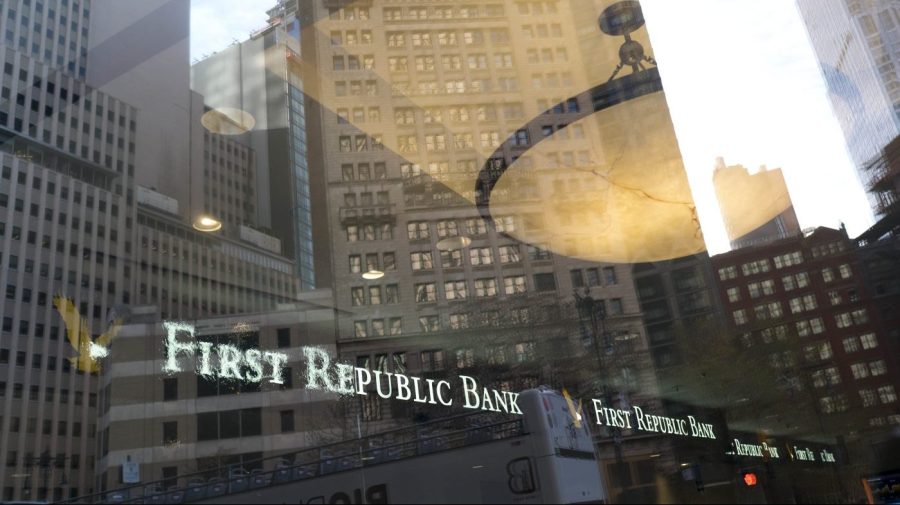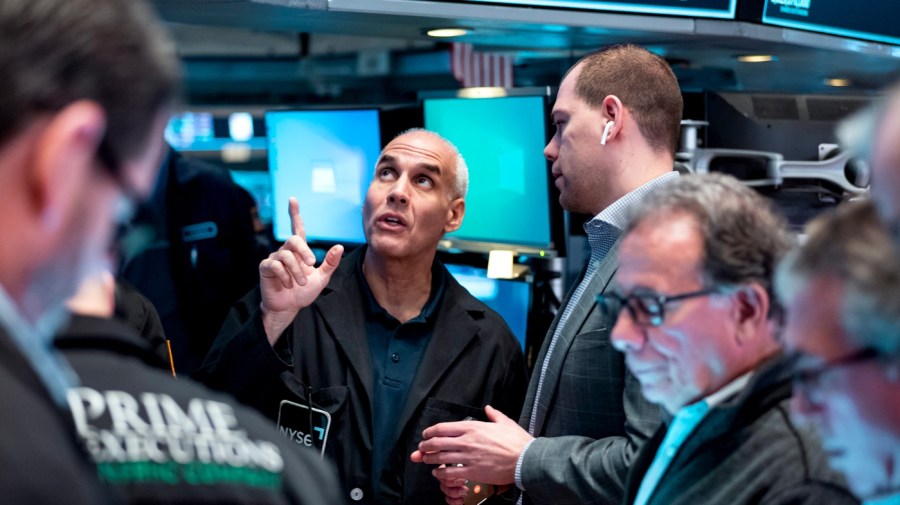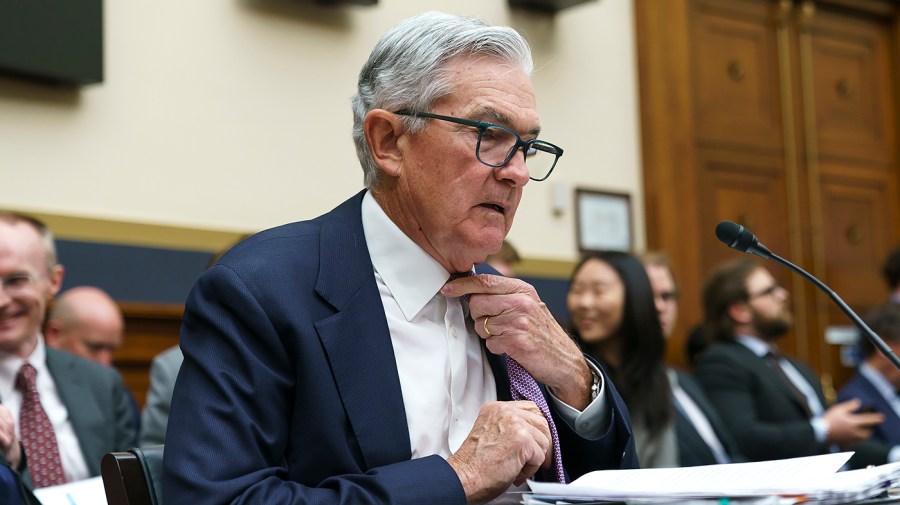Banking wrap-up: What you need to know about the sector’s turmoil
Markets took a serious hit Wednesday as the financial sector took a double hit from the continuing fallout from the Silicon Valley Bank (SVB) collapse and the worries over the health of Europe’s second largest bank, Credit Suisse, which appealed to the Swiss government for help.
The total market capitalization of the six biggest banks in the U.S. is down $183 billion from Feb. 1, driven by the SVB and Signature Bank failures and now by the European bank rout, Bloomberg has calculated.
While emergency U.S. government action over the weekend appeared to soothe some of the angst earlier this week about SVB and Signature Bank, investors and bankers are on high alert now for which segments of the banking sector could be the next to face peril.
The Dow Jones Industrial Average closed with a loss of 280 points Wednesday, finishing the day down 0.9 percent. The S&P 500 closed with a loss of 0.7 percent and the Nasdaq composite edged out a gain of 0.05 percent.
While all three major indexes bounced back from losses of more than 1.5 percent, the fears that shook the market are still lingering.
Here’s what you need to know about how the downfall of Silicon Valley Bank led to a shaking of the entire financial system.
Credit Suisse raises contagion fears

Credit Suisse is the latest major bank to face a crisis of confidence after the collapse of SVB boosted global concerns about the solvency of troubled financial firms.
Shares of Credit Suisse plunged more than 30 percent in European trading Wednesday after an official with the Saudi National Bank — Credit Suisse’s largest shareholder — told Reuters it would not boost its funding of the beleaguered central bank.
The value of Credit Suisse bonds also plummeted and traders piled up on bets that the bank would default.
Credit Suisse officials insisted earlier in the day that the bank was in solid financial shape.
But the bank’s late Wednesday call for help to the Swiss National Bank and the country’s top bank regulator showed how dire the situation has become.
Need to know more? Five things to know about the Silicon Valley Bank takeover
“Any distressed bank is going to see surging funding costs, so banking turmoil will remain the primary focus on Wall Street,” wrote Edward Moya, senior market analyst at investment firm OANDA, in a Wednesday analysis.
Along with being Europe’s second-largest bank, Credit Suisse has a substantial presence in the U.S. and is subject to strict Federal Reserve oversight and stress-testing.
Further troubles for Credit Suisse, which has been embroiled in scandal and financial woes for years, could prompt the Fed to get involved.
Regional US banks are losing even more value

The collapse of Silicon Valley Bank and Signature Bank over the past weekend brought new scrutiny to other regional banks with similar financial concerns.
Moody’s Analytics placed six major regional banks on watch for downgrades, citing their heavy reliance on uninsured deposits and the dwindling value of their long-term investments — two issues that sank SVB and Signature.
Stocks of those banks have whipsawed throughout the week, falling Monday and recovering Tuesday before plunging again on Wednesday.
Shares of First Republic Bank, another California-based bank with tens of billions of dollars in uninsured deposits, were down more than 21 percent by Wednesday afternoon.
Slides continue: Moody’s weighs downgrade for six US banks following SVB collapse
First Republic is one of six banks flagged by Moody’s and investors are concerned it could be the next US firm to fall, even though bank officials have expressed confidence in its standing.
“This crisis will end when consumers and companies no longer have any doubts about the solvency of their banking institutions,” Zachary Feinstein, an assistant professor at Stevens Institute of Technology and director of its financial technology program, told The Hill in an email.
“This event is really about confidence,” he added. “The scale can primarily be measured by sentiment rather than figures that can be found on balance sheets.”
Markets are bouncing between relief and fear

Financial markets have been all over the place this week. Following the rescue of SVB and Signature over the weekend by the Federal Deposit Insurance Corporation (FDIC), markets opened higher on Monday before losing their gains to fears of a continuing contagion among smaller and mid-size banks.
On Tuesday, equity markets surged on hopes that the failure of SVB would signal to the Federal Reserve that it had raised interest rates high enough and that continuing rate hikes, which slow economic activity, would be deemed unwise. But those gains were largely wiped out, too.
On Wednesday, concerns about Credit Suisse compounded the fears in the U.S. financial sector. CEO Larry Fink of financial behemoth Blackrock warned about “more seizures and shutdowns coming” in his annual letter to investors, adding more fuel to the fire.
House Financial Services Committee member Rep. Blaine Luetkemeyer (R-Mo.) told Politico Wednesday that the government should temporarily insure all U.S. bank deposits.
“If you don’t do this, there’s going to be a run on your smaller banks,” he told Politico. “Everyone’s going to take their money out and run to the JPMorgan’s and these too-big-to-fail banks, and they’re going to get bigger and everybody else is going to get smaller and weaker, and it’s going really be bad for our system.”
Regulators under fire for missing signs

Deposits at SVB skyrocketed over the past two years, nearly doubling from $115 billion in 2020 to $212 billion by the end of 2022.
This is something, along with the bank’s exposure to interest rate hikes, that should have caught the eye of regulators, Republicans are saying.
“These banks were following the same kind of strong standards that Dodd-Frank required and they were not meeting the supervisory needs with regard to their interest rate risk. That could’ve been picked up by regulators,” Senate Finance Committee member Mike Crapo (R-Idaho) told the Fox Business television network on Wednesday.
“The bank leaders didn’t adequately protect the liquidity of their assets and the supervisors did not pick up on that quickly enough,” he said.
What did regulators miss? Silicon Valley, Signature banks lobbied hard to loosen bank rules
Democrats have been vocal that the current crisis could have been avoided had a 2018 deregulation law that walked back the Dodd-Frank regulations enacted in the wake of the 2008 financial crisis not been passed by Congress.
“Let’s be clear. The failure of Silicon Valley Bank is a direct result of an absurd 2018 bank deregulation bill signed by Donald Trump that I strongly opposed,” Sen. Bernie Sanders (I-Vt.) wrote in a statement on Sunday.
“Five years ago, the Republican Director of the Congressional Budget Office released a report finding that this legislation would ‘increase the likelihood that a large financial firm with assets of between $100 billion and $250 billion would fail.’ Unfortunately, that is precisely what happened,” he wrote.
It’s still not a 2008-style crisis — yet
The collapse of SVB was the biggest bank failure since 2008, when the global financial crisis threw the world into recession and plunged millions of Americans into deep hardship.
Policymakers, bankers and investors across the world are still putting together the pieces of why SVB failed, what they say about the strength of the financial system, and the new ways concerns of financial contagion are spreading through social media — a novel technology during the 2008 panic.
While it is far too soon to know how many more banks could face serious trouble, there are reasons to believe the world is still well off from a 2008-style crash that brings down the entire financial system.
SVB and Signature were each deeply intertwined with the technology sector. Both banks were unusually dependent on the health of major tech firms and vulnerable to rising interest rates, which deepened their financial woes this year.
SVB and Signature also had remarkably tight-knit communities of customers, whose panic accelerated the runs facing both banks.
“These failures were especially surprising on the heels of a lengthy period of calm in the banking system. There were no bank failures last year or the year before. The system has been enjoying solid loan growth, extraordinarily few credit problems, and healthy profitability,” wrote Mark Zandi, chief economist at Moody’s Analytics, in a Monday research note.
“These are not the conditions that historically have been the fodder for problems in the system,” Zandi wrote.
While Credit Suisse did not have the same reliance on tech firms or uninsured deposits, a series of funding issues and scandals have tarnished the bank’s finances and reputation. Years of fading faith in Credit Suisse made it more vulnerable to concerns of collapse.
–Updated at 4:04 p.m.
Copyright 2024 Nexstar Media Inc. All rights reserved. This material may not be published, broadcast, rewritten, or redistributed..











